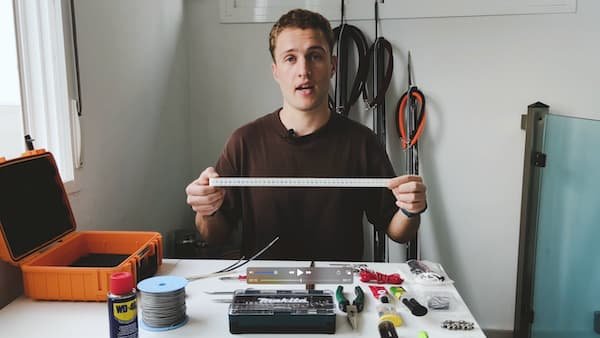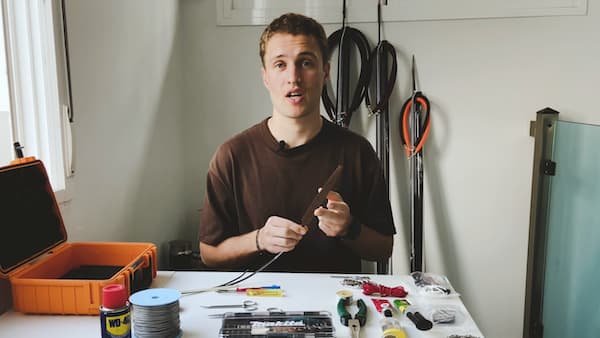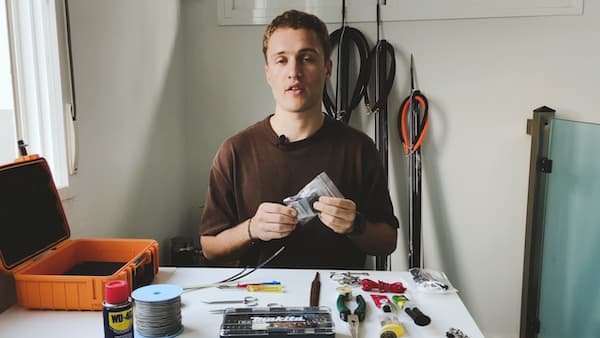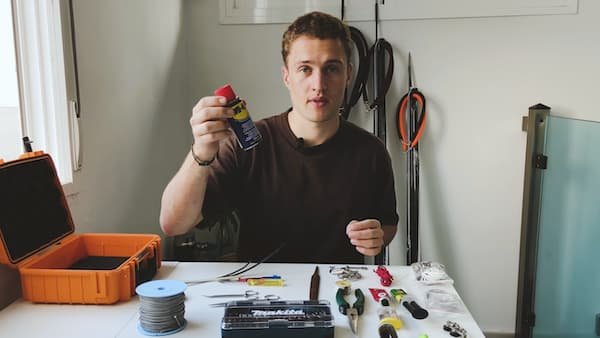Hello everyone, it's Timon from Alchemy Spearfishing. Today, I want to share a crucial item I consistently bring along during my spearfishing adventures. Whether I'm on a trip or out on a boat, unforeseen issues can occur and potentially spoil the day. That's why I make sure to have this compact box with me at all times. Now, let's explore its contents.
Let's begin with a fundamental item: wetsuit glue. It's a must-have in my pocket whenever I go spearfishing. The number of instances where either I or one of my friends has encountered a small tear on our wetsuits is countless. Given the chilly waters in our fishing locations, maintaining a snug and sealed wetsuit is paramount. Having the ability to perform a speedy repair beforehand or addressing a tear during a dive ensures that you can promptly fix it and carry on with your day of fishing.
The second type of adhesive I carry is super glue, neatly packed in a small box with three individual packets. Using these small packets prevents them from drying out or going bad, making them a more practical choice than a single large container. These come in handy if, at the start of your dive, you notice issues like the fins' rails coming loose. A quick application of this super glue can provide a temporary fix and help you get through the day.
When super glue proves insufficient, I typically have a tube of 2K epoxy glue with me. This versatile adhesive is suitable for a wide range of applications. Whether the wood of your spearfishing gun starts deteriorating, a reliable temporary and lasting fix can be achieved with this epoxy glue. It's particularly handy for longer trips but may not be as convenient for day outings due to its slightly time-consuming and effort-intensive application. Nonetheless, I find it crucial to always include it in my repair kit.

An essential item to have on a regular basis is a reel line or Dyneema line, measuring 100 mm. This versatile line serves various purposes; whether I damage my shooting line on rocks or it breaks, this line comes to the rescue. It often doubles as my shooting line. In case a rubber band snaps, I can use it to secure a new constrictor knot or create new inserts. The possibilities with this line are truly limitless, making it a crucial item to carry when out on the boat or traveling.
As we discussed earlier about addressing rubber issues on the boat, there are a few other essential tools for this task. Firstly, I consistently carry a pair of long-nose pliers, which prove invaluable for inserting wishbones into even small rubber bands. Secondly, a reliable pair of scissors is a must for cutting Dyneema to the required size. Lastly, when tying knots, it's crucial to prevent the ends from fraying, so I always have two lighters with me. One is a robust lighter with a wind-resistant flame, ideal for use on the boat in windy conditions, while the other is a standard lighter suitable for quieter environments during travel.

When you're on a trip and need to trim your rubber bands entirely, perhaps due to damage or tearing, it's wise to have some spares on hand. To determine the appropriate length for cutting, I typically carry a tape measure. Additionally, this tape can prove useful for measuring fish or other items during the trip.
A handy item that has become a constant companion on my recent travels is this compact box. Inside, you'll find a ratchet screwdriver accompanied by a variety of bits. Whether you need to extract something stuck in your mechanism or replace the line on your reel, there's often a small screw involved. The challenge lies in the fact that these screws may not all require the same type of screwdriver. Hence, having a diverse range of bits ensures that you are well-prepared for various scenarios.

When diving in areas with substantial structures and large rocks, the chances are high that you might collide your shaft with the rocks at some point. Whether you've hit a fish before or not, it's probable that your shaft will become blunt afterward. To address this, I prefer to have a stainless steel file with me. This allows me to easily give my shaft a quick touch-up if it becomes too blunt.
When employing a breakaway system, numerous shackles are inevitably part of the setup. Since these can be misplaced or accidentally go overboard, I prefer to keep a few spares in my parts box. This way, I can readily address any issues with my setup whenever the need arises.

Speaking of spare components, particularly for my roller rigs, I consistently carry an additional pulley system. This serves as a quick replacement if any issues arise. Additionally, I keep an extra pair of rollers on hand, providing assurance in case of unexpected malfunctions. Whether it's for my roller gear or breakaway system, I always have a bit of bungee line in my kit. This proves useful for replacing worn-out breakaway bungees, which tend to wear quickly. Being prepared with these spare parts ensures that I can promptly address any issues and continue fishing when out on the boat.

I keep a small bag containing various thicker lines compared to the standard shooting line. These come in handy when a thicker line is required, but only a small section of it is needed, and I don't want to use the primary shooting line. These are typically old offcut lines that conveniently fit into the box, so I usually carry them with me. Additionally, I have some WD40 and zip ties in my kit because they can prove useful in unexpected situations. It's always good to have them on hand as they don't take up much space, and you never know when you might need them.

As evident, everything fits quite snugly in there. It's valid to note that this box can be somewhat bulky and inconvenient for travel. However, on previous trips, I used a dry bag to store my fixing gear, and inevitably, everything got wet on the boat, leading to rusty tools. For the past few years, I've been using this waterproof box, and I can't envision reverting to a dry bag. That concludes the video; I hope you found it enjoyable. Dive safely!